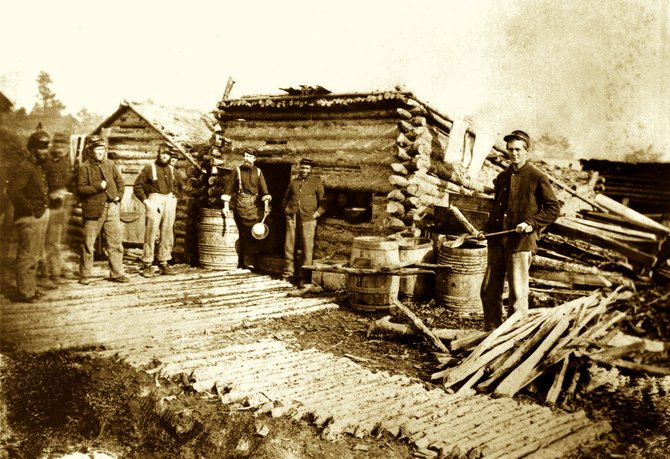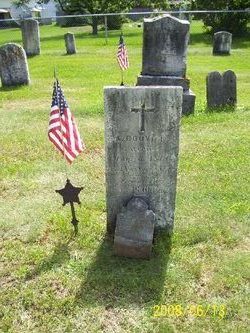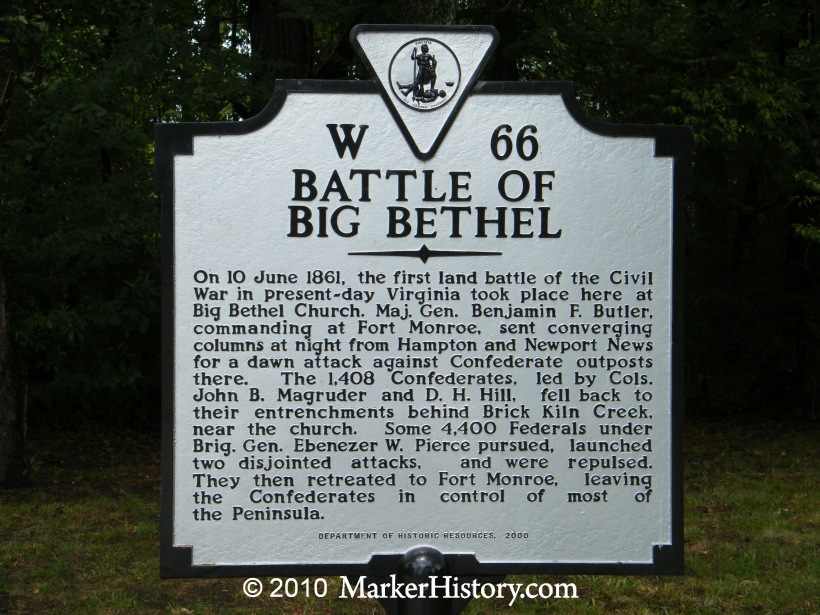
My paternal great grandmother Virginia's life was marked by the Civil War. Her future 1st husband, a young blacksmith named Antoine Bouvier would serve early in the conflict. He enlisted at age 19, May 2 1861 with his two brothers Peter and Joseph, in Company A of the 1st Vermont Infantry. He participated in the battle of Big Bethel Church , Va on June 10 1861. This battle was one of the earliest of the war and received wide press coverage. He was mustered out August 15 of that year and returned home to Vermont and his sweetheart Virginia.
Did his example or stories of the Battle of Big Bethel church spur one of Virginia's brothers Israel to sign up in September of that year? He joined the 5th Vermont Infantry in nearby St. Albans, VT. in September 1861. They were stationed in and about Washington until the spring of 1862 when Israel would see action in several major battles Antietam, Gettysburg, Fredericksburg and was wounded twice in the battle of Petersburg. He saw action in Petersburg, Cold Harbor, Spotsylvania and Wilderness. A full list of all the action he would have seen is found in Page of the descendants of the 5th Infantry
 |
| The 2nd Vermont Volunteer Infantry at Camp Griffin near Washington DC(Library of Congress) |
 |
| Mustered into U.S. service Sept. 16, 1861; mustered out June 29, 1865 5th Vermont Infantry Ensign |
Thus three of her brothers: Marcel, Israel and Tuffield all served in the conflict in the same company of the 5th Vermont Infantry. Israel, who signed up in St. Albans in September 1861 when he was about 19. would later boast that he was the youngest soldier. That honor, however, went to his brother Tuffied who was probably about 16 when he enlisted. Israel would see action in several battles and was wounded twice in the battle of Petersburg. He saw action in Petersburg, Cold Harbor, Spotsylvania and lastly Wilderness. Perhaps it was his example, rather than Antoine's that inspired the two other Raymond brothers to enlist.
Virginia would marry Antoine Bouvier in Feb 1863 while Israel was on his way to participate in the Chancelorsville campaign. Their son, Antoine Jr. was born in December of that year just as his uncle Marcel was heading off to war. Virginia and Antoine would have a daughter Phoebe in 1865 but Antoine would die in a logging accident in 1866. In 1869 she would marry my great grandfather Paul Chicoine. Paul did not serve in the Civil War. Virginia survived him and married a third time in 1885 to William Cook. He registered for the draft late in the Civil War July 1 1863 but there is no record that he served.
 |
| Bouvier grave Highgate Vermont |
Their younger brother Tuffield would follow his siblings to battle in February 1864. He was only 16. He participated in the battles of Cold Harbor, Spottsylvania and Petersburg and was fighting along side his brother when Marcel was wounded May 5 of that year. The trenches (see picturewhere the 5th Vermont dug in are still visible in the Wilderness battlefied today.
Like many kin of those who fell in the Civil War Virginia would have no body to bury in their cemetery in Highgate Vermont. She would have the consolation of an account of her brother's death from his two companions in arms.
* (christened Theophile)



.jpg)
























.jpg)